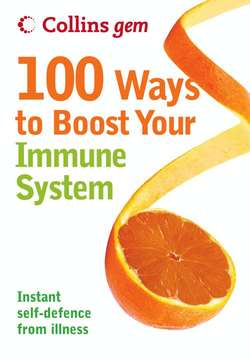Читать книгу 100 Ways to Boost Your Immune System - Theresa Cheung, Theresa Cheung - Страница 15
Auto-immune disorders
ОглавлениеA weakened immune system will not only increase your susceptibility to colds and flu, it can also increase your risk of auto-immune disorders in which the immune system attacks healthy body cells.
Normally the immune system is capable of telling the difference between ‘self’ and ‘non-self’ tissue, but auto-immune disorders occur when it can no longer differentiate between the two. Why this happens is still uncertain. Some experts believe that these disorders occur following infection by some kind of organism that looks similar to particular cells in the body, which are later mistaken for the organism and targeted for attack.
In many cases, auto-immune disorders cause the destruction of body tissue, resulting in the decreased functioning of an organ or tissue, or several organs or tissues. Examples of auto-immune disorders include:
Chronic fatigue syndrome: A condition of prolonged weariness and fatigue that is not relieved by rest or caused by other medical conditions. Experts aren’t sure what causes it but one theory is that it is caused by some sort of auto-immune response.
Diabetes (Type 1): A disease that occurs when the pancreas produces too little insulin to regulate blood sugar. Symptoms include increased thirst, weight loss, fatigue and increased urination.
Multiple sclerosis: An auto-immune disease that affects the central nervous system (brain and spinal cord). Symptoms include fatigue, tremors and weakness in one or more extremities.
Pernicious anaemia: Caused by the lack of a substance needed to absorb vitamin B12 from the gastrointestinal track. Symptoms include fatigue, unsteady gait and bleeding gums.
Rheumatoid arthritis: A painful long-term disease that causes inflammation of the joints and surrounding tissues.
Most auto-immune disorders are chronic but can be controlled with medication. The outcome of treatment will vary with the disorder but the aim is to reduce the immune response against normal body tissue while leaving intact the immune response against invading antigens.
